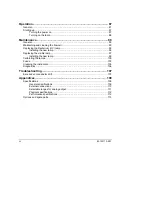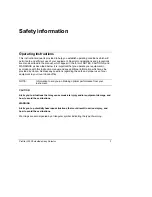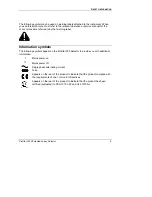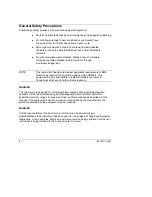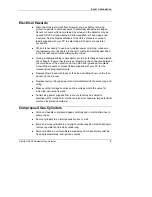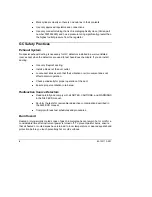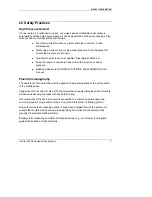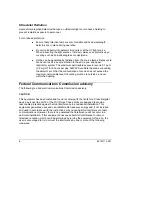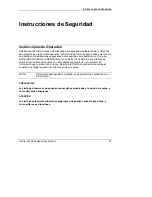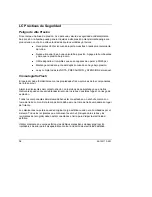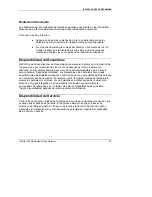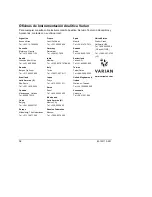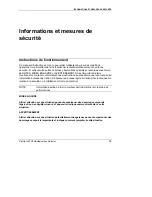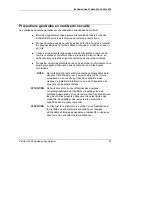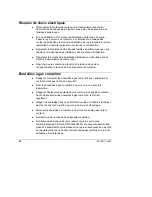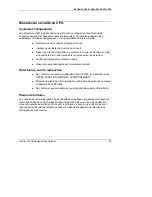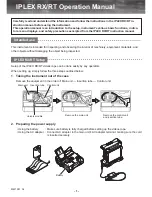
8
85-102113-00:1
Ultraviolet Radiation
Liquid chromatograph detectors that use an ultraviolet light source have shielding to
prevent radiation exposure to personnel.
For continued protection:
Ensure that protective lamp covers of variable and fixed wavelength
detectors are in place during operation.
Do not look directly into detector fluid cells or at the UV light source.
When inspecting the light source or fluid cell, always use protective eye
covering such as borosilicate glass or polystyrene.
Ozone can be generated by radiation from the source lamps. Exposure to
ozone can result in severe irritation to the skin, eyes, and upper
respiratory system. The maximum permissible exposure level is 0.1 ppm
(0.2 mg/m
3
) for 8 hours per day. ALWAYS ventilate the area surrounding
the detector such that the concentration of ozone does not exceed the
maximum permissible level. All venting must be to outside air, never
within the building.
Federal Communications Commission advisory
The following is a Federal Communications Commission advisory:
CAUTION
This equipment has been tested and found to comply with the limits for a Class B digital
device, pursuant to part 15 of the FCC Rules. These limits are designed to provide
reasonable protection against harmful interference in a residential installation. This
equipment generates, uses and can radiate radio frequency energy and, if not installed
and used in accordance with the instructions, may cause harmful interference to radio
communications. However, there is no guarantee that interference will not occur in a
particular installation. If this equipment does cause harmful interference to radio or
television reception, which can be determined by turning the equipment off and on, the
user is encouraged to try to correct the interference by one or more of the following
measures:






